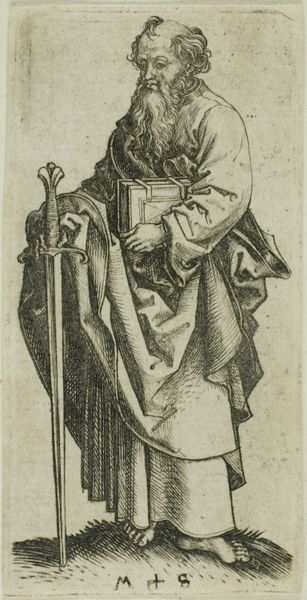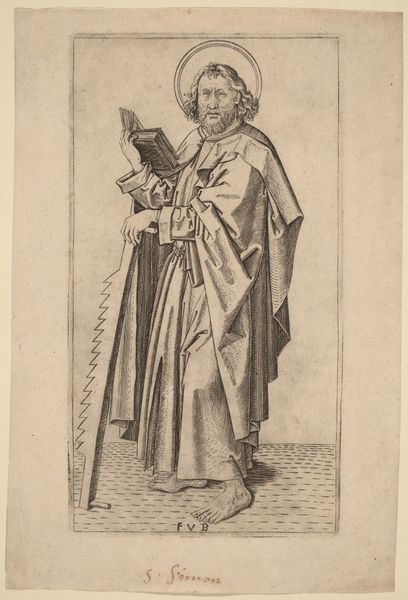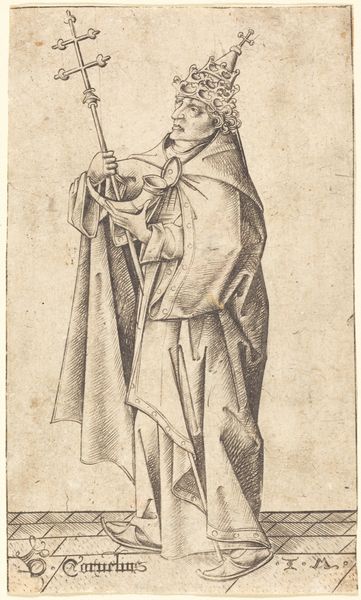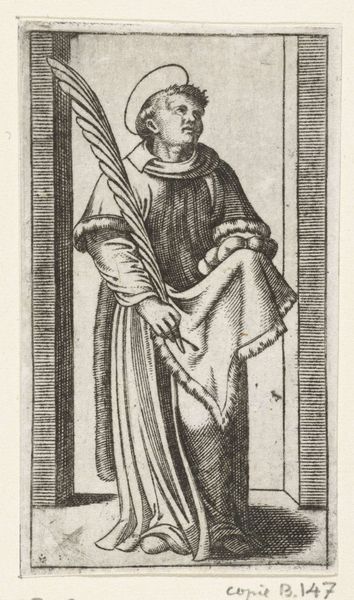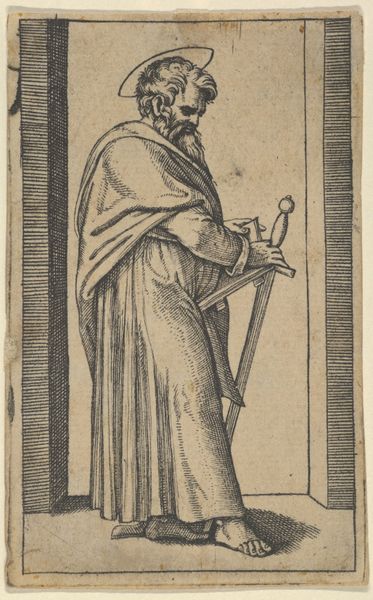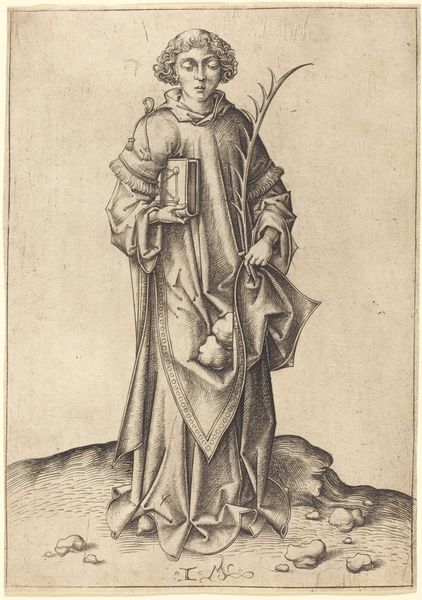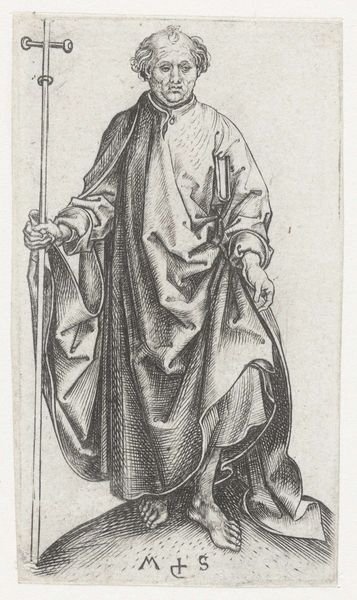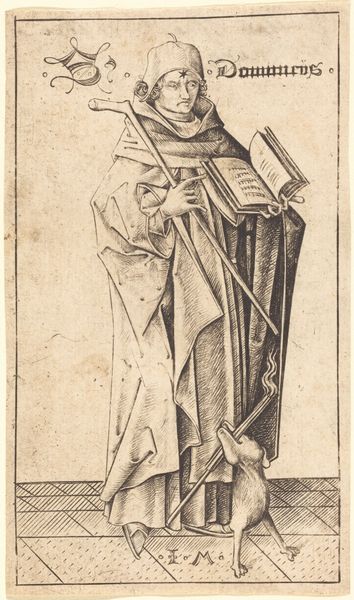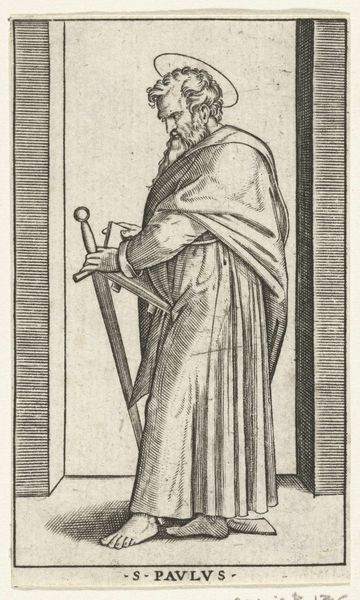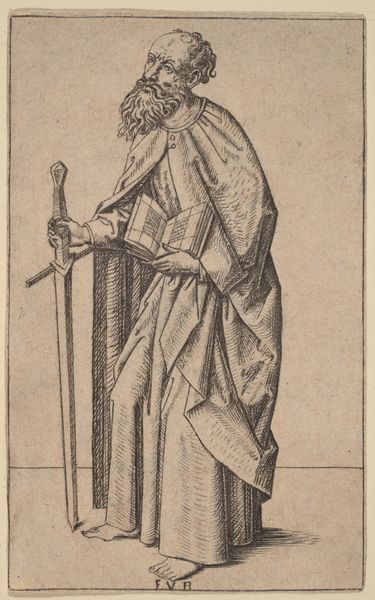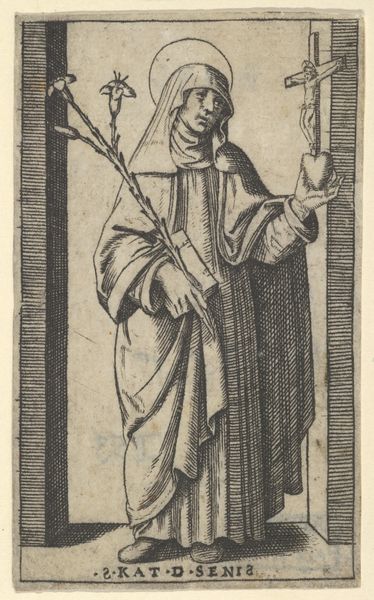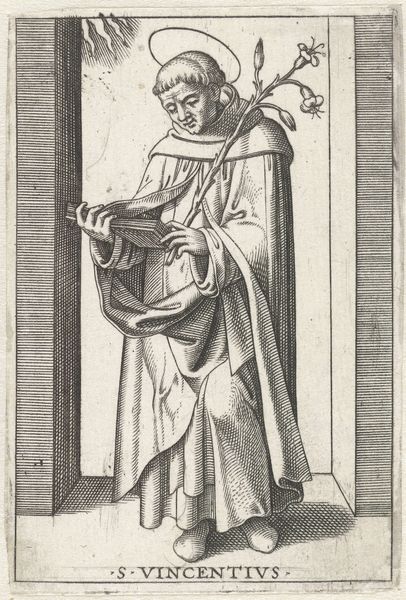
drawing, print, paper, engraving
#
portrait
#
drawing
#
medieval
# print
#
figuration
#
paper
#
northern-renaissance
#
engraving
Dimensions: 169 × 98 mm
Copyright: Public Domain
Curator: This is “St. Anthony the Hermit,” an engraving dating from 1490 to 1500, attributed to the Master FVB, currently in the collection of The Art Institute of Chicago. Editor: It has such a solemn air. The dense lines create a deeply textural image; you can almost feel the weight of the saint’s garments and the bristly fur of the pig at his feet. Curator: Indeed. Master FVB’s use of engraving is meticulous. Notice how the varying line weights create subtle tonal gradations, lending the figure a sculptural quality. It's a tour-de-force of late medieval printmaking technique. Editor: Speaking of the pig, its presence isn't arbitrary, is it? St. Anthony is often depicted with a pig, an emblem connected to his patronage of swineherds. It speaks to the importance of symbols and the stories of the laboring classes intertwined with religious icons. The imagery resonates with those devoted to a difficult lifestyle or even connected to outbreaks of disease. Curator: Quite so. Also, consider the saint himself. Look at the cross on his shoulder, the book, his clothing: Each of those objects serves a clear purpose in a visual rhetoric constructing a very specific idea of holiness and faith. His face has a placid nature that seems very still and devout, too. Editor: And that’s fascinating in light of how we’ve come to understand monastic traditions. Beyond its devotional use, I wonder how this print might have functioned as an aspirational image, specifically for those attempting to perform piety and seek spiritual meaning in a changing world. The Reformation wasn’t too far away. Curator: A valuable perspective. This work also provides excellent source material into the technological development of reproductive printmaking during this period and its impact upon the dispersal of images and ideas. I suggest spending more time observing his engraving style—especially the geometric shapes that are prevalent throughout. Editor: Thank you for guiding our listening audience into this compelling portrait. Hopefully, viewers will carry an interest in seeing what stories lay buried in the lines and materials that create our visual world.
Comments
No comments
Be the first to comment and join the conversation on the ultimate creative platform.
